Egypt's Uprising: One Year Later
Anti-government protests began across Egypt Jan. 25, 2011, calling for the end of President Hosni Mubarak's near 30-year rule, following the overthrow of Tunisian President Zine El Abidine Ben Ali in the first of the Arab Spring revolutions across the Middle East.
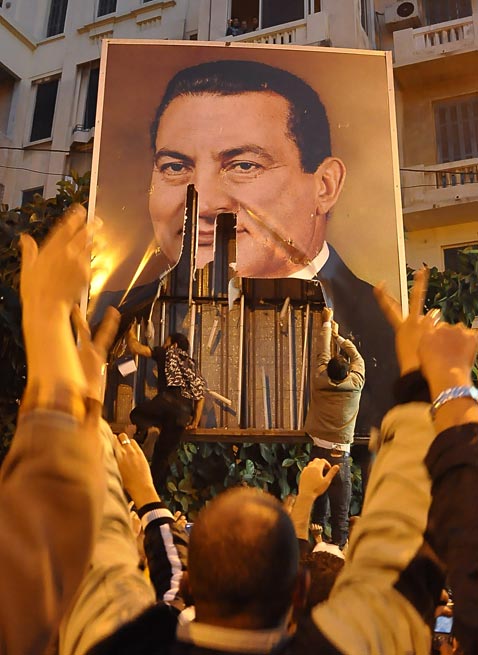
Jan. 25, 2011: Protesters tear a portrait of President Hosni Mubarak during a protest against his rule in the northern port city of Alexandria. Egyptians nationwide demonstrate against Mubarak's rule calling the uprising "the day of revolution against poverty, corruption and unemployment." (AFP/Getty Images)
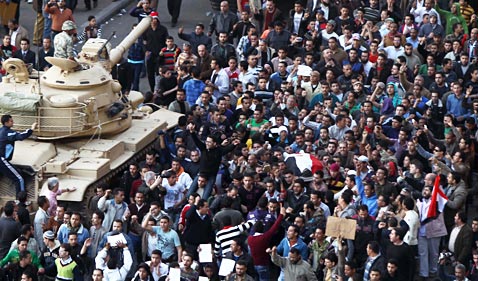
Jan. 29, 2011: Protesters demanding the ouster of President Mubarak carry the body of a dead comrade wrapped in the Egyptian flag as they march past army tanks deployed in Cairo. Mubarak had ordered troops and tanks into cities to quell demonstrations the day before. (Khaled Desouki/AFP/Getty Images)

Feb. 3, 2011: Anti-government protesters throw stones during clashes in Cairo, Egypt. Gangs of Mubarak supporters attack journalists, foreigners and human rights workers. (Ben Curtis/AP Photo)
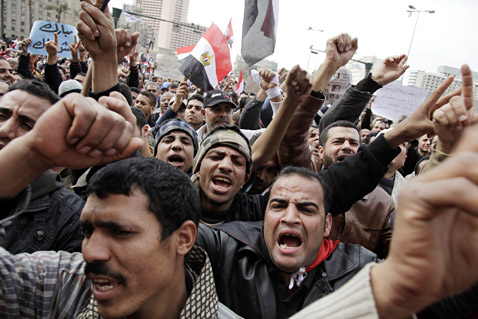
Feb. 6, 2011: Protesters gather in Tahrir Square in Cairo, Egypt. Egypt's Vice President Omar Suleiman meets with major opposition groups for the first time and agrees to freedom of the press and to release those detained since demonstrations began. (Kuni Takahashi/Getty Images)

Feb. 11, 2011: Egyptian women celebrate the news of the resignation of President Hosni Mubarak in Tahrir Square in downtown Cairo, Egypt. Mubarak handed control of the country to the military. (Tara Todras-Whitehill/AP Photo)
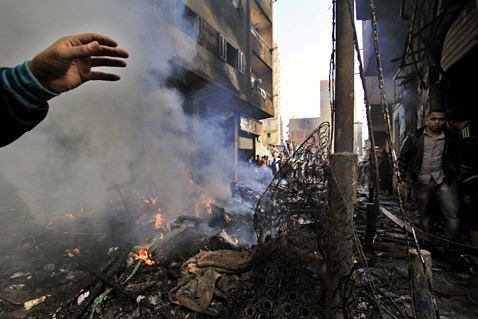
May 8, 2011: Egyptians gather next to a building that belongs to Christians, set on fire during clashes between Muslims and Christians in the Imbaba neighborhood of Cairo. The violence kills 12 and injures more than 200. (Khalil Hamra/AP Photo)
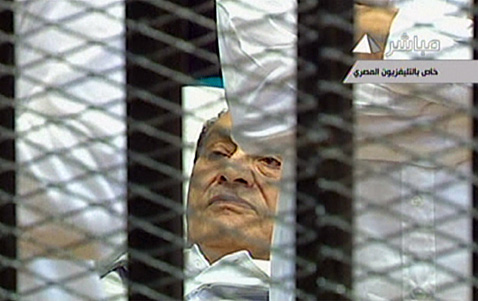
Aug. 4, 2011: Former Egyptian President Hosni Mubarak lies on a hospital bed, inside a cage of mesh and iron bars, in a Cairo courtroom as his trial begins on charges of corruption and ordering the killing of protesters during the uprising. (Egyptian State Television/AFP/Getty Images)

Nov. 20, 2011: A protester throws a gas canister toward Egyptian riot police near the interior ministry during clashes in downtown Cairo, Egypt. Firing tear gas and rubber bullets, Egyptian riot police clashed for a second day with thousands of rock-throwing protesters demanding that the ruling military quickly announce a date to hand over power to an elected government. (Tara Todras-Whitehill/AP Photo)
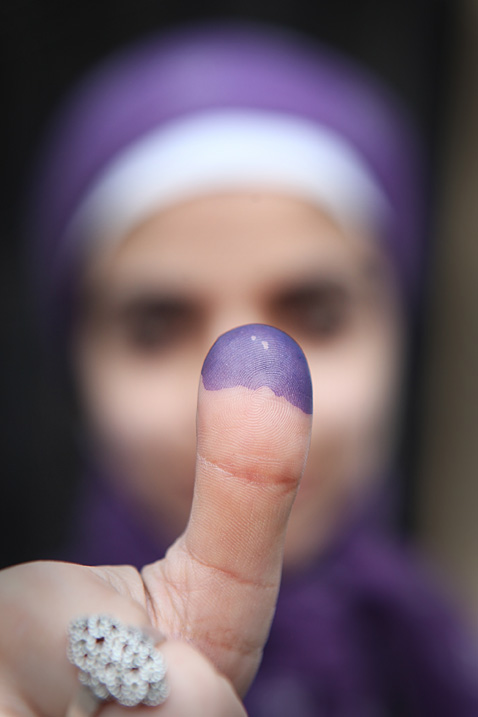
Nov. 28, 2011: A female voter shows her inked finger after voting at a polling station in a girl's school in downtown Cairo, Egypt. Voting begins in Egypt's first parliamentary elections since the ouster of longtime authoritarian leader Hosni Mubarak. (Peter Macdiarmid/Getty Images)
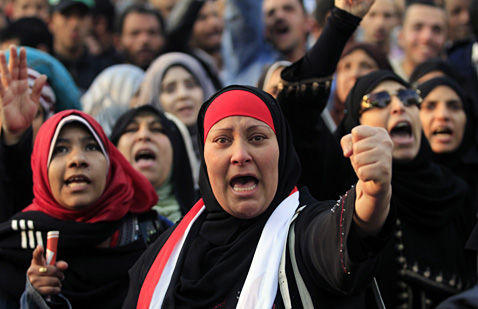
Jan. 20, 2012: Protesters chant slogans at a rally honoring those killed in clashes with security forces in Tahrir Square in Cairo, Egypt, nearly a year after the 18-day uprising that ousted President Hosni Mubarak. Activists are now trying to energize the public to demand that the ruling military step down. (Khalil Hamra/AP Photo)